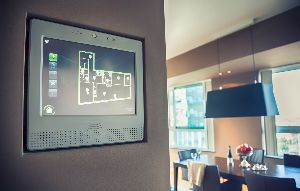
If you have a coffee machine that brews a pot before you open your eyes in the morning or a security system that disarms itself when you get home, you have some idea of what home automation is. These setups are extremely beneficial, making your days more streamlined and easier to navigate. Many appliances and systems within your house can be interconnected to function together. The following guide explains more about this type of smart technology.
What Is Home Automation?
Home automation takes household convenience to a new level. Ordinary devices in an automated home are connected via the internet, allowing them to interact with each other and perform functions without manual inputs.
A system can encompass everything from a smart oven that you can preheat remotely to a thermostat that can be remotely adjusted while you're at work. Other items with internet connection capabilities often include washing machines, coffee makers, light bulbs, sound systems, motorized window treatments, security alarms, and surveillance cameras.
What Are the Benefits of Home Automation?

Home automation setups come with one tablet that operates multiple systems, giving you total control of the property from anywhere in the house. When various appliances can be connected to the internet, they can be controlled as part of a network. For example, if you're hosting a party, you can use the tablet to stream music throughout every room in the house. With the touch of a button, you can also turn on TVs in different parts of the home and switch off basement lights from your bedroom. As a result, you can eliminate piles of remotes or panels of wall switches and knobs, making your house less cluttered and more minimalist.
Home automation can also significantly impact monthly utility costs. For example, if you preset lights to turn on and off at certain times, you won't have to worry about costs incurred by accidentally leaving them on. It also enhances security since you can lock and unlock doors remotely.
What's the Difference Between Single-Task and Multitask Automation?
Single-task automation refers to devices that can be programmed to perform actions at particular times, like every hour, every day, or every week. For example, you might set outdoor lights to turn on at 7 p.m. each evening.
Multitask automation runs on an "if-this-then-that" model, where starting one task triggers a stream of subsequent actions. For example, you might come home and say, "Hey Assistant, I'm home from work" to whatever smart technology you own. The system will then turn on all the lights, start playing music, and preheat the oven to 425 degrees.
If you want to modernize your property through home automation, reach out to the experts at Alamo Electronics in Cincinnati, OH. Their technicians have a wide range of experience that includes setting up smart home technology and seamlessly connecting all household appliances and HVAC and electrical systems. They can also install home theaters and sound systems. Call (513) 791-2300 to schedule a consultation, or learn more online.
About the Business
Have a question? Ask the experts!
Send your question

